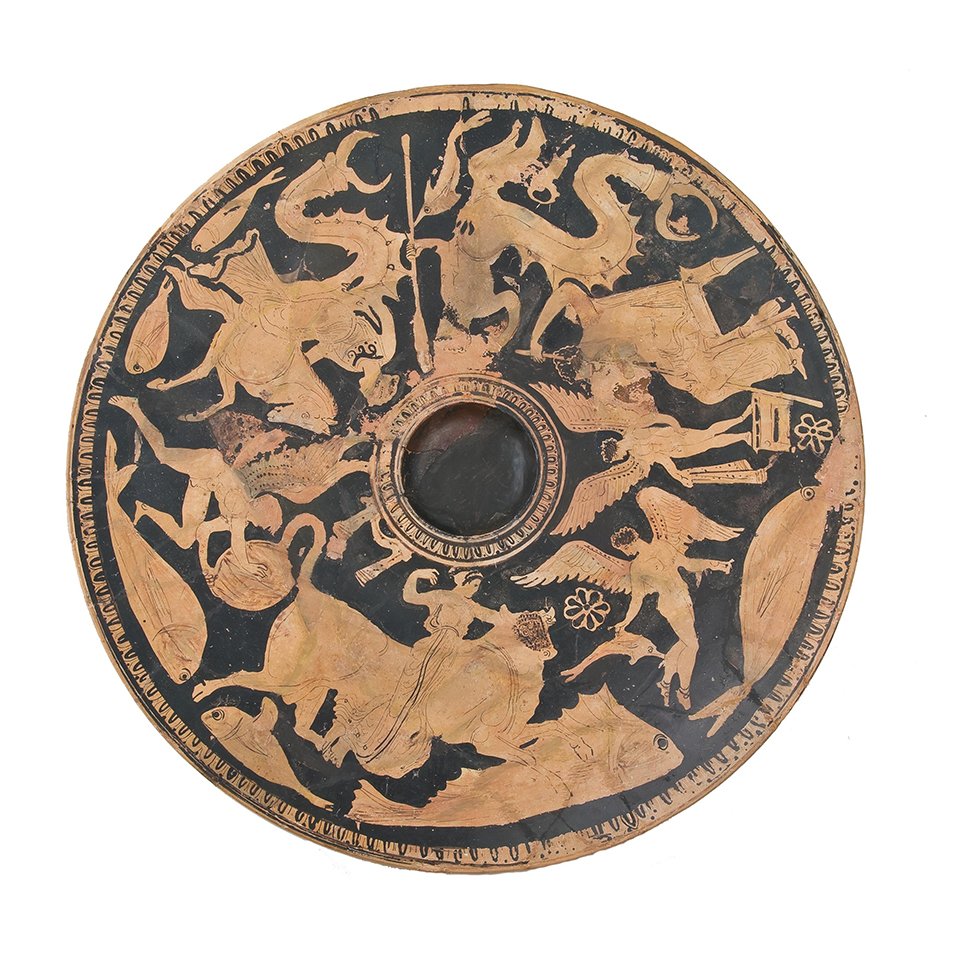This red-figure fish plate was found in 1879 in one of the Eltigen mounds near the ancient city of Nymphaion. Today this is the territory of the city of Kerch. The painting illustrates Europa's sea journey to Crete. This myth gained popularity among the inhabitants of the Northern Black Sea polises as early as the 5th century BCE. It became a favorite composition on painted Attic vases from the 4th century BCE.
At the end of the 5th century BCE, Athenian artists began to paint fish plates. These are wide plates with a rounded recess in the center. They poured the sauce into this recess and laid out the pieces of fish around it. Vase painters painted various fish, octopuses, and other sea creatures. And later, a scene from the myth of the abduction of Europa appeared on the fish plates. The similarity of the images on many vessels gave rise to the assumption that one or several masters of the same school painted them in the first quarter of the 4th century BCE.
Zeus on the throne and heading toward him Europa have a central place in the composition. Europa sits on a bull and holds onto his horn.
In this way, there are two storylines: the sea journey of Europa and the return of Zeus to his divine form in Crete. Triton, the son of Poseidon and Amphitrite, a Nereid riding a hippocampus, and three winged deities accompany Europa. One of them is Eros, the son of Aphrodite; others are Pothos, the personification of love passion, and Himeros, patron of sexual desire. In addition, sea creatures like fish and dolphins complement the composition.
In ancient times, the myth of Europa acquired a symbolic interpretation. Among the ancient Greeks, marriage had several meanings. The wedding meant the girl's transition from being a bride to a married woman and her moving to the groom's house. And they perceived death as the transition of the soul to another state during its transfer to the afterlife. Europa's sea journey to Crete to marry Zeus was the symbol of the soul's transition from the world of the living to the realm of the dead. The largest number of plates with certain mythological compositions were found on the Bosporus. Almost all of them are from tombs, mounds, or places of commemoration of the dead. Hellenes placed such plates in the grave or served them with a memorial meal and later broke them. Indeed the dish from Nymphaion was broken into 87 pieces.
en

